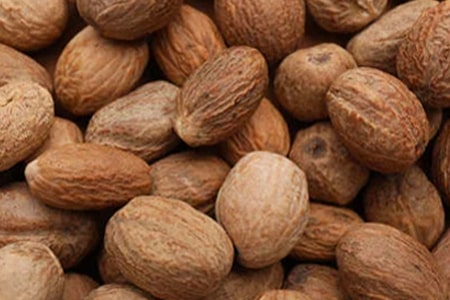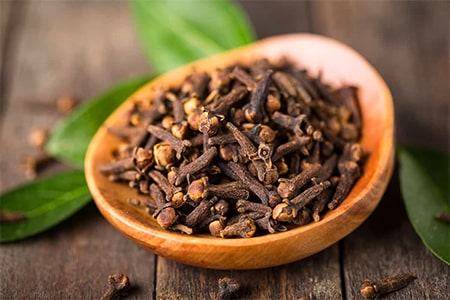WHY SOURCE SPICES FROM SRI LANKA?
Sri Lanka, the island of spices and exotic flavours has long been a trading hub and main source for spices. Historical records speak of traders around the world flocking to the shores of Sri Lanka as early as the 13th Century. The country’s global fame for finest quality spices also brought many colonial powers to its doors, leading to nearly 500 years of colonial rule.
Today, Sri Lanka continues to provide the world with the finest spices, formed by its unique terroir, spices of Sri Lanka have unique chemical composition, flavour and aroma notes, which makes them highly sought products in the global market.
Sri Lankan spice and concentrate industry is composed of a large variety of products, ranging from bulk spice products like true cinnamon to value-added essential oils. Due to their unique flavour and aroma, Sri Lankan spices and cinnamon are identified under the geographical indication and brand name of Ceylon Spices and Ceylon Cinnamon.
The main spices produced in Sri Lanka include True Cinnamon, Pepper, Cardamom, Cloves, Nutmeg and Mace and the country is the ninth most important exporter of spices in the world.
Ceylon Cinnamon
Ceylon Cinnamon (Cinamomum Zylanicum) a plant indigenous to Sri Lanka is a moderately size bushy ever green tree. Cinnamon was a popular spice in the ancient Arab world and Arab traders have paved the way for Cinnamon to travel a long distance through the spice route to the European market. Cinnamon has motivated many historical voyages leading to discovery of New World by Christopher Columbus and Vasco da Gama to Sri Lanka & South India. The name Ceylon Cinnamon derived from the former name of Sri Lanka is a very established geographical indication for Cinnamon.
WHY CEYLON CINNAMON?
Diabetes. Recent studies have found that cinnamon may help control blood sugar levels. In 2003, for example, Diabetes Care found that people with type 2 diabetes who took 1, 3, or 6 grams of cinnamon reduced their fasting blood glucose levels by 18–29 percent, and also reduced triglycerides by 23–30 percent. It also reduced LDL cholesterol by 7–27 percent, and total cholesterol by 12–26 percent.
Alzheimer’s Disease – According to a 2009 study, extracts of Ceylon cinnamon inhibited the formation of the proteins and filaments that are the hallmark of Alzheimer’s disease. Researchers isolated a certain flavonoid (proanthocyanidin) from the cinnamon and determined it had the majority if the inhibitory properties.
Cancer – One animal study found that a particular component in cinnamon impaired the proliferation of cancer cells and slowed tumor growth. A second study published in 2010 also found that cinnamon extracts were directly linked with anti-tumor effects.
Anti-inflammatory – A study from South Korea found that compounds from cassia cinnamon had promise as an anti-inflammatory agent, with potential in treating dyspepsia, gastritis, and inflammatory diseases.
Anti-microbial. Several studies have indicated that cinnamon has the ability to fight off bacteria. One published in 2007, for example, found that even low concentrations boosted the activity of antibiotic “clindamycin.” Study authors wrote that the results suggested that cinnamon could be used in combination therapy against certain stubborn strains of bacterial infections. As far as other health benefits related to cinnamon, such as weight loss, the research is still limited. A scientific analysis published in 2010 reviewed the studies published to date, and concluded that cinnamon has anti-inflammatory, antimicrobial, antioxidant, antitumor, cardiovascular, cholesterol-lowering, and immunomodulatory effects. It added that animal studies have demonstrated strong blood-sugar-lowering properties, and that cinnamon as an adjunct to the treatment of type 2 diabetes is a “most promising area.”



Cinnamon Grades
01.Alba
03.C5
05.M4
07.H1
09.H3
11.Cinnamon Bales
02.C5 Special
04.C4
06.M5
08.H2
10.Cinnamon Powder
12.Cut Cinnamon consumer packs and Cinnamon tea bags.

Goraka
Garcinia quaesita, known as Goraka (Sinhala) and Kodukkaippuli (Tamil) is belongs to family Clusiaceae. Goraka has been used in Sri Lanka since ancient times for culinary and medicinal purposes. The young Goraka fruits are green in color and it will gradually turn yellow when ripe. It is a medium evergreen, shade-loving, relatively slow growing tree naturally found in the local tropical rainforests of Sri Lanka. The tree is small to medium sized with horizontal or drooping branches. In Sri Lanka goraka has been used for culinary and medicinal purposes. Now goraka is becoming a popular spice in the world because of its potential as a dietary supplement for weight losses and appetite control.

Pepper
Pepper is the most widely used spice in the world and known as “King of the Spices”. Ceylon Pepper is particularly favoured worldwide as it is quite rich in piperine, the alkaloid which lends it a distinct pungency. As a result, Ceylon Pepper from Sri Lanka fetches a premium price in the international spice market. Black pepper is widely used as a ‘hot’ cooking spice and seasoning. The taste of Sri Lankan black pepper is richly aromatic, with floral and citrus notes, while retaining a strong pungency.

Nutmeg
Nutmeg is a perennial evergreen spice tree and a native of Molluccas in East Indonesia. There is some evidence to suggest that the Roman priests may have burned nutmeg as a form of incense. It is also known to have been used as a prized and costly spice in medieval cuisine, used as flavorings, medicines, preserving agents and that was at the time highly valued in the European markets. Nutmeg is reported to have been introduced to Sri Lanka at the beginning of the 19th century but there is evidence that the crop had been brought here even before that by merchants who were traveling on the Silk Road.

Mace
Nutmeg and Mace are two separate spices derived from the fruit of tree Myristica fragrans of the family Myristicaceae. Myristica fragrans is, in fact, the only tree in the world that produces two separate spices. The fruit contains a hard pit, which is a nutmeg, while the lacy red membrane which surrounds it is called mace. Nutmeg, a perennial evergreen spice tree, is native to the Moluccas in East Indonesia. From ancient times, Nutmeg has been a highly prized spice for its numerous culinary and other applications. Sri Lankan nutmeg and mace suppliers export whole nutmeg, nutmeg essential oil, and ground nutmeg and mace to global markets.

Cloves
The clove tree is a medium sized symmetrically shaped tree with smooth grey bark canopy has a cone shape. Fully matured trees grows upto 15 -20m. It is believed to be originated in Maluku Islands in Indonesia. Clove along with nutmeg and pepper were highly prized in Roman Era. Cloves were traded by Arabs in the Middle ages but in the 15th century Portugal took over the trade. The Portuguese brought large quantities of cloves to Europe mainly from Malku Islands and valued it at seven grams of gold per kg. Later the Spanish then the Dutch dominated the trade till the seventeenth century. The French introduced clove to Mauritius in the year 1770 subsequently the cultivations were introduced to Guiana, Zanzibar, West Indies and most of the Brazil. It is not known how and when clove was introduced to Sri Lanka but may be the Arab traders or Colonial rulers may have brought the plant to the country as Sri Lanka was a major trading hub for spices during that time.
